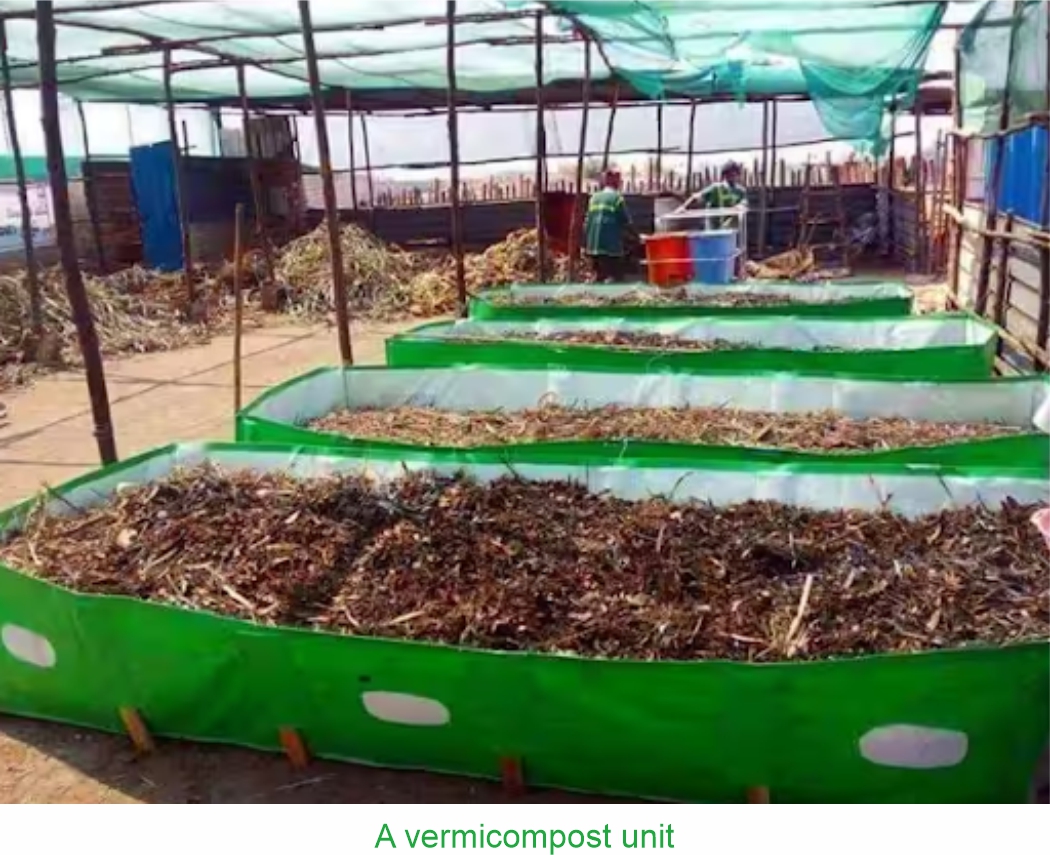|
Introduction
Crop Residue: A Means to Bioeconomy Being one of the leading biological sectors, agriculture produces the majority of biomass. Crop residues such as leaf litter, seed pods, stalks, stems, straws, husks, weeds, and agro-industrial waste including bagasse, molasses, peels (orange, potato, cassava), and weeds are the major types of AWs that cause public concern and harm the sustainability of agricultural regimes [2]. This biomass can be used in the bioeconomy. Lignocellulose, a major component of agricultural biomass, is composed of cellulose, hemicellulose, and lignin, in which cellulose accounts for the majority of the total biomass (3050%). Several studies have shown that strategic management and valorisation of lignocellulosic biomass can result in the development of a variety of domestic and commercial products. Compost, briquette (bio coal), charcoal, and bio-bricks are a few examples of these [3]. Bioeconomic strategies based on AW management (AWM) can prevent inefficient use of AW and reckless/random burning of crop residues. Following AWM can ensure food and health security, waste valorisation to generate value-added products, farmer livelihood, job opportunities for youth, and agricultural sustainability. Converting AW into valuable resources will not only create green markets and employment opportunities but also reduce GHG pollution and reliance on fossil fuels, thereby contributing to clean, safe, and sustainable agriculture [4,5]. Moreover, reducing, reusing, and recycling agricultural residue is critical for decoupling the effects of climate change from economic growth (both resource and impact decoupling), reducing human reliance on the use of resources, and preventing pressures on soil, biodiversity, and global food security [6].
Development Alternatives Group has been promoting environmental awareness among the scientific community regarding the possibility of reducing, reusing, and recycling AW. Focused on the major types and sources of AW, it highlights the potential environmental risks along with quantity mapping of waste generation. DA promotes the recycling and utilisation pathway of AW and elaborates all possible strategies for utilisation and valorisation through mobile bio-briquette-making machines and vermicomposting units into value-added products, such as green briquette and vermicompost. Its green innovations could bring economic growth, job opportunities to the youth of farming communities, soil enrichment, and ensure sustainable agriculture for food and health security. Development Alternatives also makes policy suggestions for government-aided AMW programmes towards the circular economy. Subsequently, present approaches will provide better and more efficient environmentally friendly alternatives to other forms of energy sources and help to solve AWM issues. Our green innovations could bring economic growth, job opportunities to the youth of farming communities, soil enrichment and ensure sustainable agriculture for food and health security.
References
Dr Yogendra Singh Solanki
|
 Yearly,
India generates an enormous quantity of solid waste to which AW
contributes between 350990 million tonne/year. After China, India is
the worlds second-largest producer of AW. It produces more than 130
million tonnes of paddy straw, half of which is used as fodder and the
other half is thrown away. Improper AW disposal results in the release
of greenhouse gases (GHGs), such as carbon dioxide (CO2),
nitrous oxide (N2O), and methane (CH4), which
endangers both humans and the natural environment. For instance, the
practice of burning rice residue (parali) in North India causes
considerable air pollution and creates public health issues.
Yearly,
India generates an enormous quantity of solid waste to which AW
contributes between 350990 million tonne/year. After China, India is
the worlds second-largest producer of AW. It produces more than 130
million tonnes of paddy straw, half of which is used as fodder and the
other half is thrown away. Improper AW disposal results in the release
of greenhouse gases (GHGs), such as carbon dioxide (CO2),
nitrous oxide (N2O), and methane (CH4), which
endangers both humans and the natural environment. For instance, the
practice of burning rice residue (parali) in North India causes
considerable air pollution and creates public health issues.  Reduce, Reuse and Recycle
Reduce, Reuse and Recycle